Abstract
A procedure for quantitative analysis of skin carcinogenesis data, for the purpose of establishing carcinogenic potency, has been applied to observations obtained from C3H mice exposed continuously to synthetic and natural petroleums. The importance of total polynuclear aromatic (PNA) content to the skin carcinogenic activity of the crude materials was also examined. Of three synthetic petroleums evaluated, all were shown capable of inducing skin neoplasms within a two-year exposure period. Under comparable exposure conditions a composite sample of five natural petroleums was noncarcinogenic. Comparison of the distributions of times to initial skin neoplasm versus dose rate, for groups exposed to synthetic fossil liquids and the reference skin carcinogen, benzo(a)pyrene, provided estimates of relative carcinotenic potency for the synthetic petroleums ranging from 1/500 to 1/1400 the potency of benzo(a)pyrene. The carcinogenic activity of a chemically isolated PNA fraction versus the crude from which it was derived suggested that this fraction was responsible for the carcinogenic activity of these synthetic petroleums in mouse skin.
Full text
PDF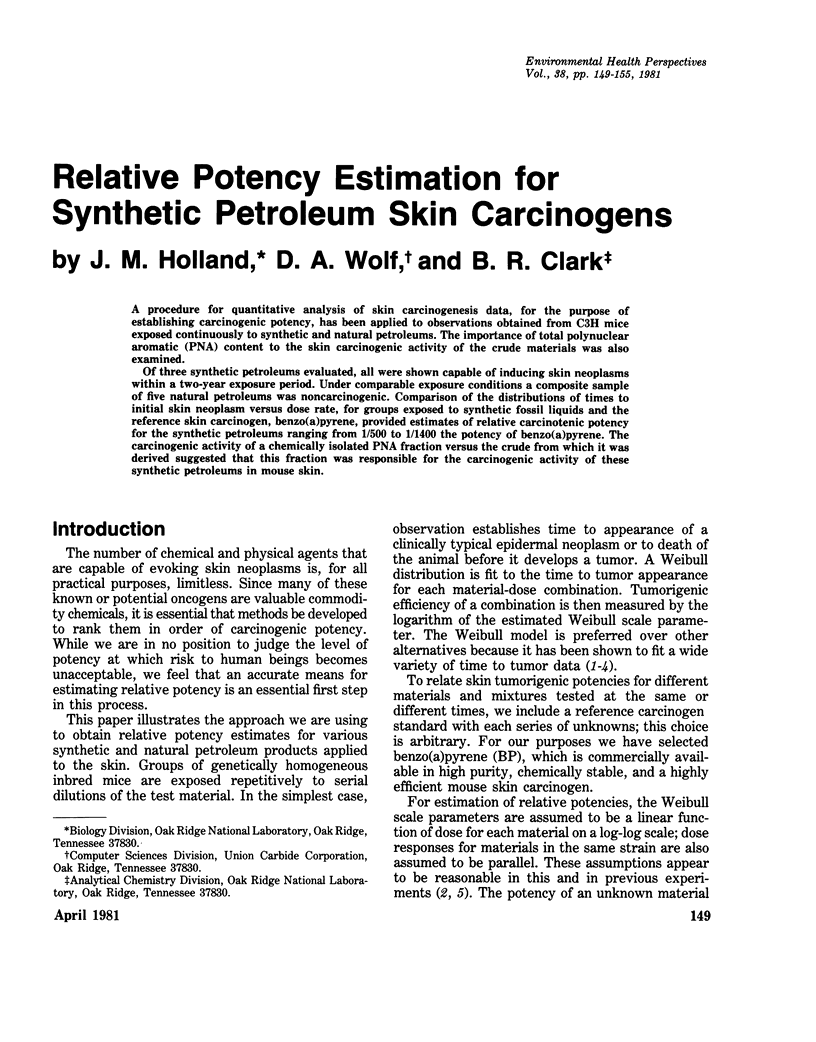
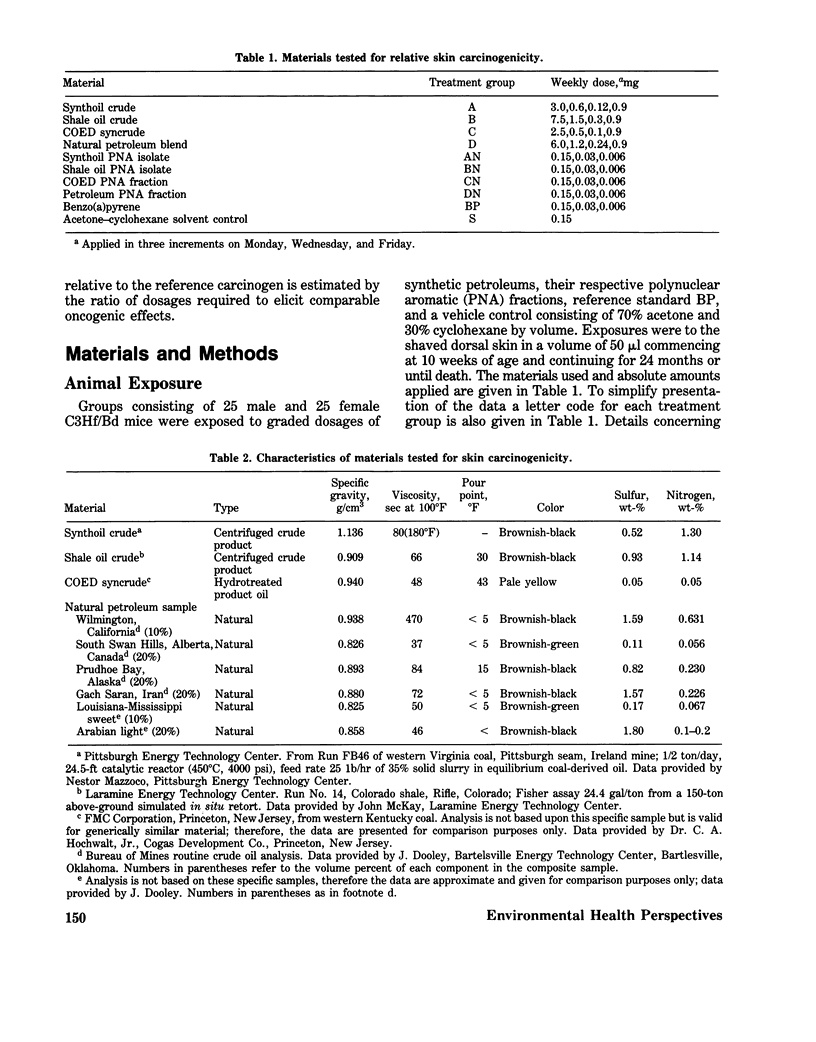
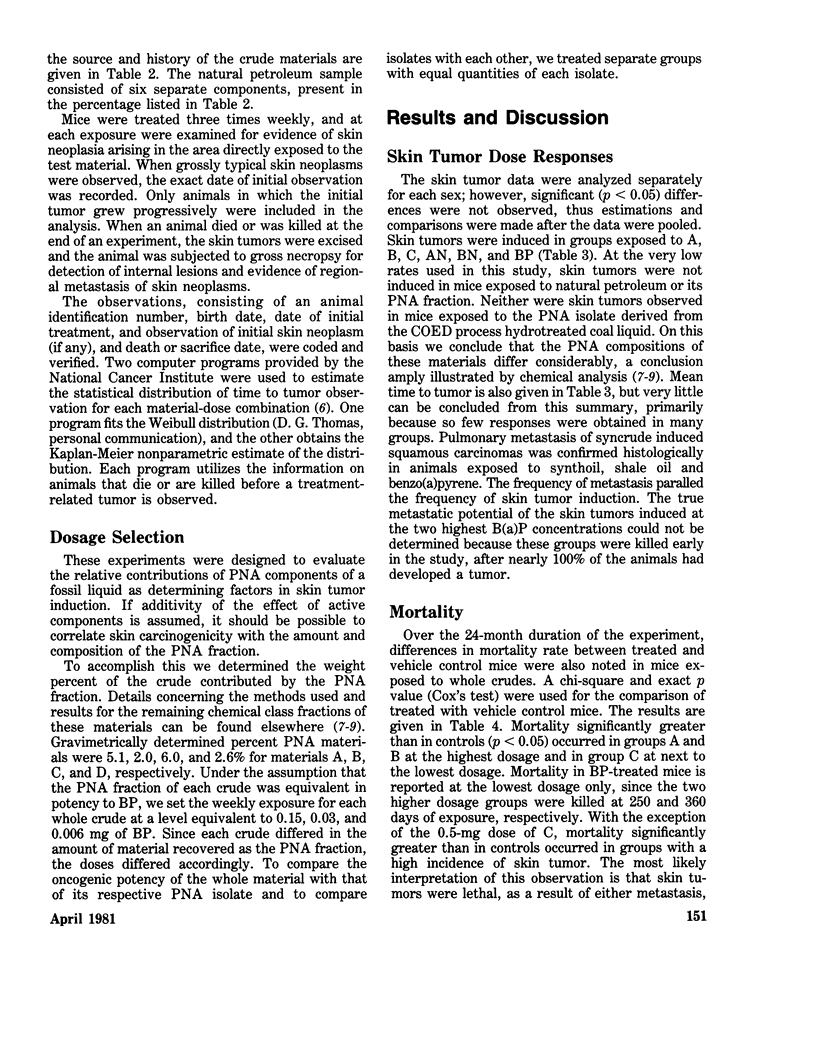
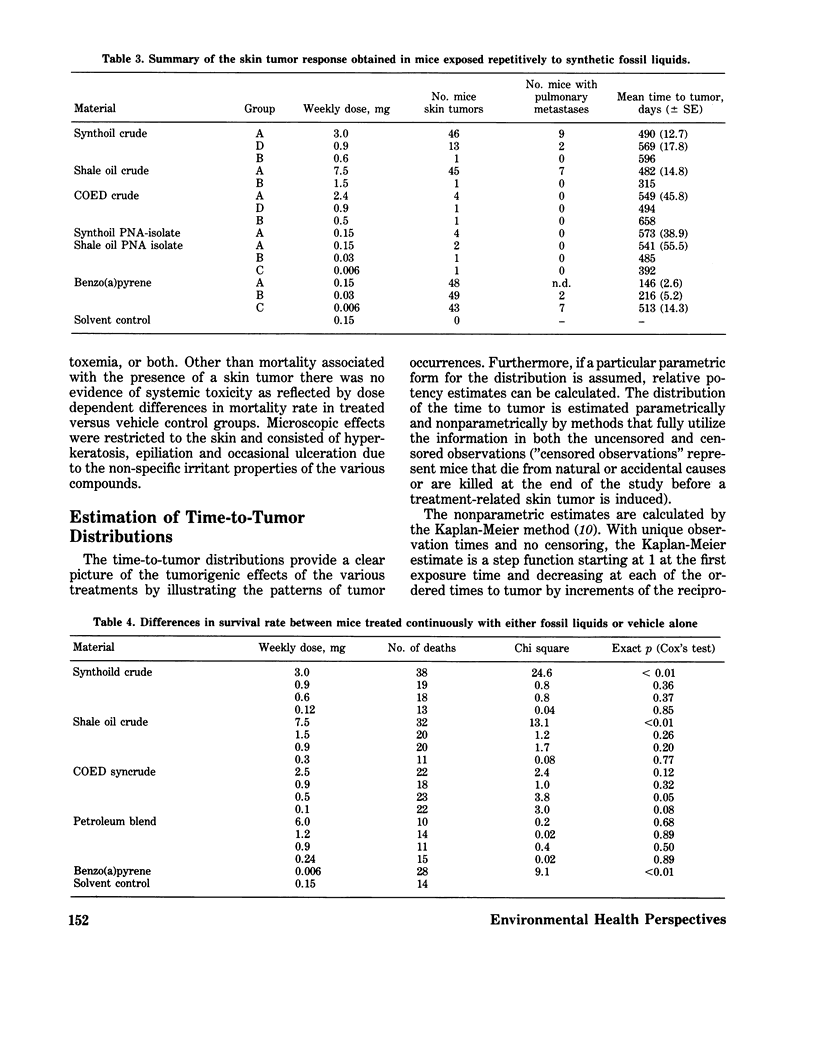
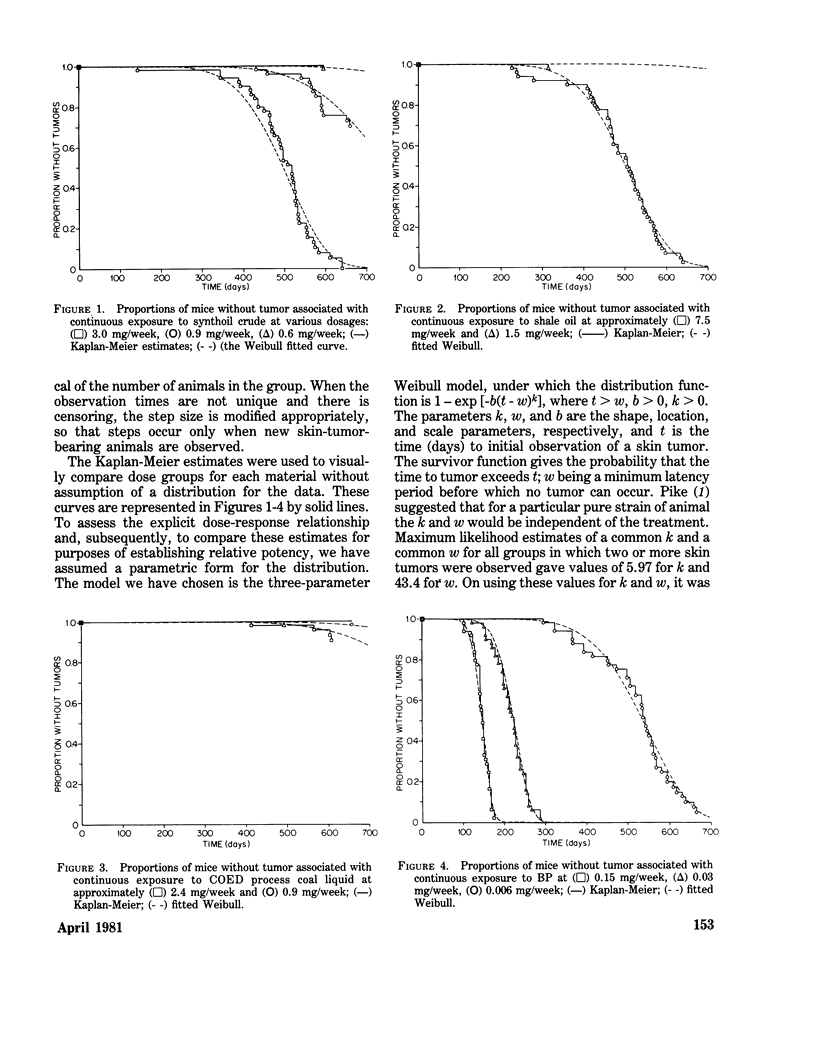
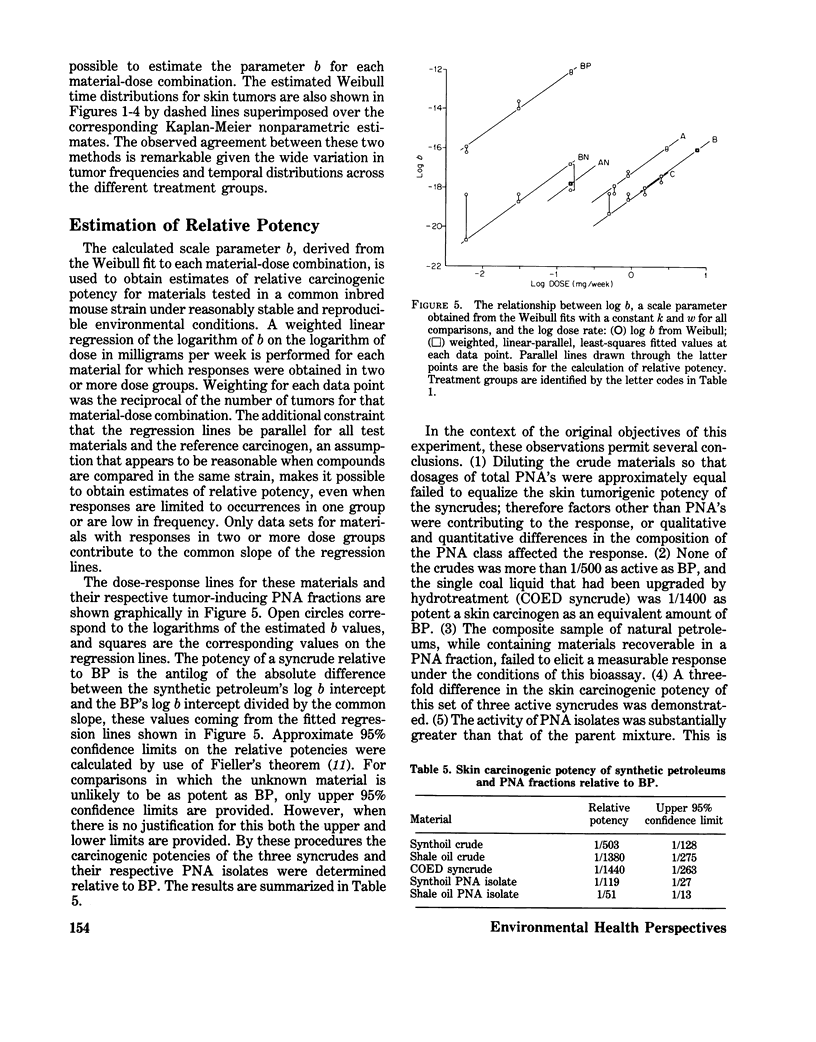
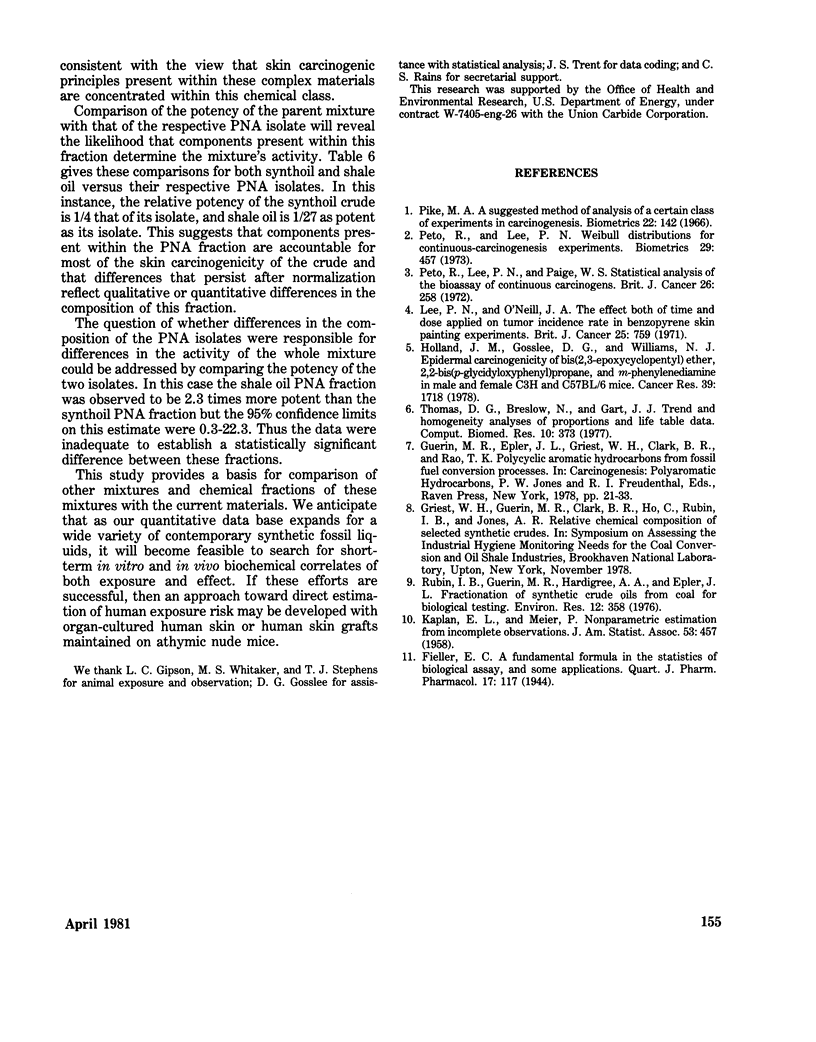
Selected References
These references are in PubMed. This may not be the complete list of references from this article.
- Holland J. M., Gosslee D. G., Williams N. J. Epidermal carcinogenicity of bis(2,3-epoxycyclopentyl)ether, 2,2-bis(p-glycidyloxyphenyl)propane, and m-phenylenediamine in male and female C3H and C57BL/6 mice. Cancer Res. 1979 May;39(5):1718–1725. [PubMed] [Google Scholar]
- Lee P. N., O'Neill J. A. The effect both of time and dose applied on tumour incidence rate in benzopyrene skin painting experiments. Br J Cancer. 1971 Dec;25(4):759–770. doi: 10.1038/bjc.1971.90. [DOI] [PMC free article] [PubMed] [Google Scholar]
- Peto R., Lee P. N., Paige W. S. Statistical analysis of the bioassay of continuous carcinogens. Br J Cancer. 1972 Aug;26(4):258–261. doi: 10.1038/bjc.1972.34. [DOI] [PMC free article] [PubMed] [Google Scholar]
- Peto R., Lee P. Weibull distributions for continuous-carcinogenesis experiments. Biometrics. 1973 Sep;29(3):457–470. [PubMed] [Google Scholar]
- Pike M. C. A method of analysis of a certain class of experiments in carcinogenesis. Biometrics. 1966 Mar;22(1):142–161. [PubMed] [Google Scholar]
- Rubin I. B., Guerin M. R. Fractionation of synthetic crude oils from coal for biological testing. Environ Res. 1976 Dec;12(3):358–365. doi: 10.1016/0013-9351(76)90046-3. [DOI] [PubMed] [Google Scholar]
- Thomas D. G., Breslow N., Gart J. J. Trend and homogeneity analyses of proportions and life table data. Comput Biomed Res. 1977 Aug;10(4):373–381. doi: 10.1016/0010-4809(77)90006-4. [DOI] [PubMed] [Google Scholar]


